Analyzing Cognitive, Speech, and Physical Development Theories
VerifiedAdded on 2023/06/10
|10
|1604
|405
Essay
AI Summary
This essay provides an overview of various aspects of child development, focusing on sensory, neurological, cognitive, speech, language, communication, physical, personal, social, and emotional development during the early years. It discusses sensory development in the first year of life, highlighting how a baby's senses become refined and preferences emerge. The essay also delves into current scientific research on neurological and brain development, emphasizing the importance of early childhood investments and the interplay between genes and experience. Furthermore, it examines theoretical perspectives related to cognitive development, particularly Piaget's and Gesell's theories, which emphasize the active interplay between the child and their environment. The essay also discusses theories related to speech, language, and communication development, including behavioral, nativistic, and semantic-cognitive theories. Additionally, it explores theoretical perspectives on physical development, such as Piaget and Gallaher's theory, and personal, social, and emotional development, referencing Bowlby's Attachment theory and the theory of mind. The essay underscores the significance of these developmental areas and their impact on current practices in early years settings.
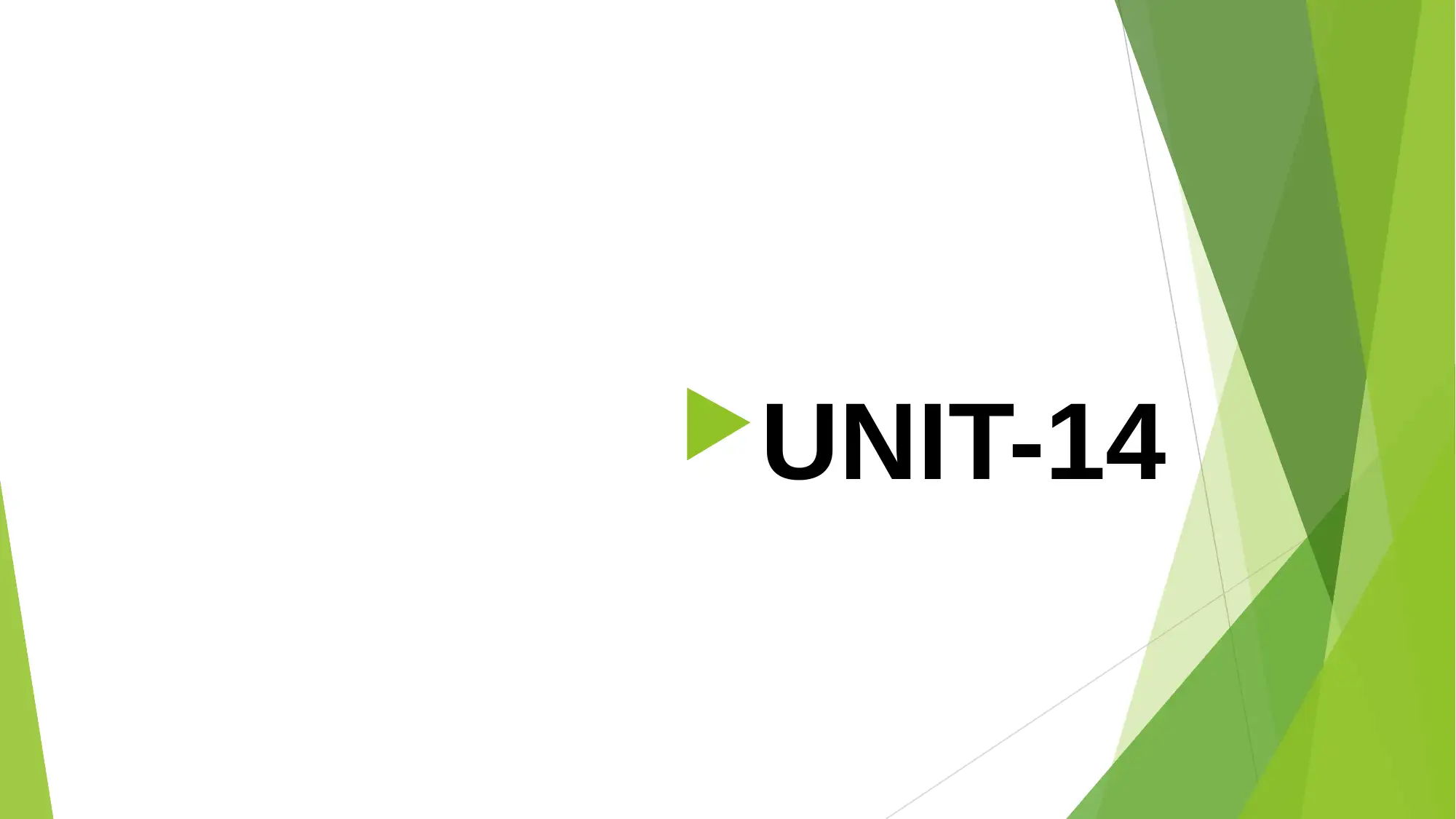
UNIT-14
Paraphrase This Document
Need a fresh take? Get an instant paraphrase of this document with our AI Paraphraser
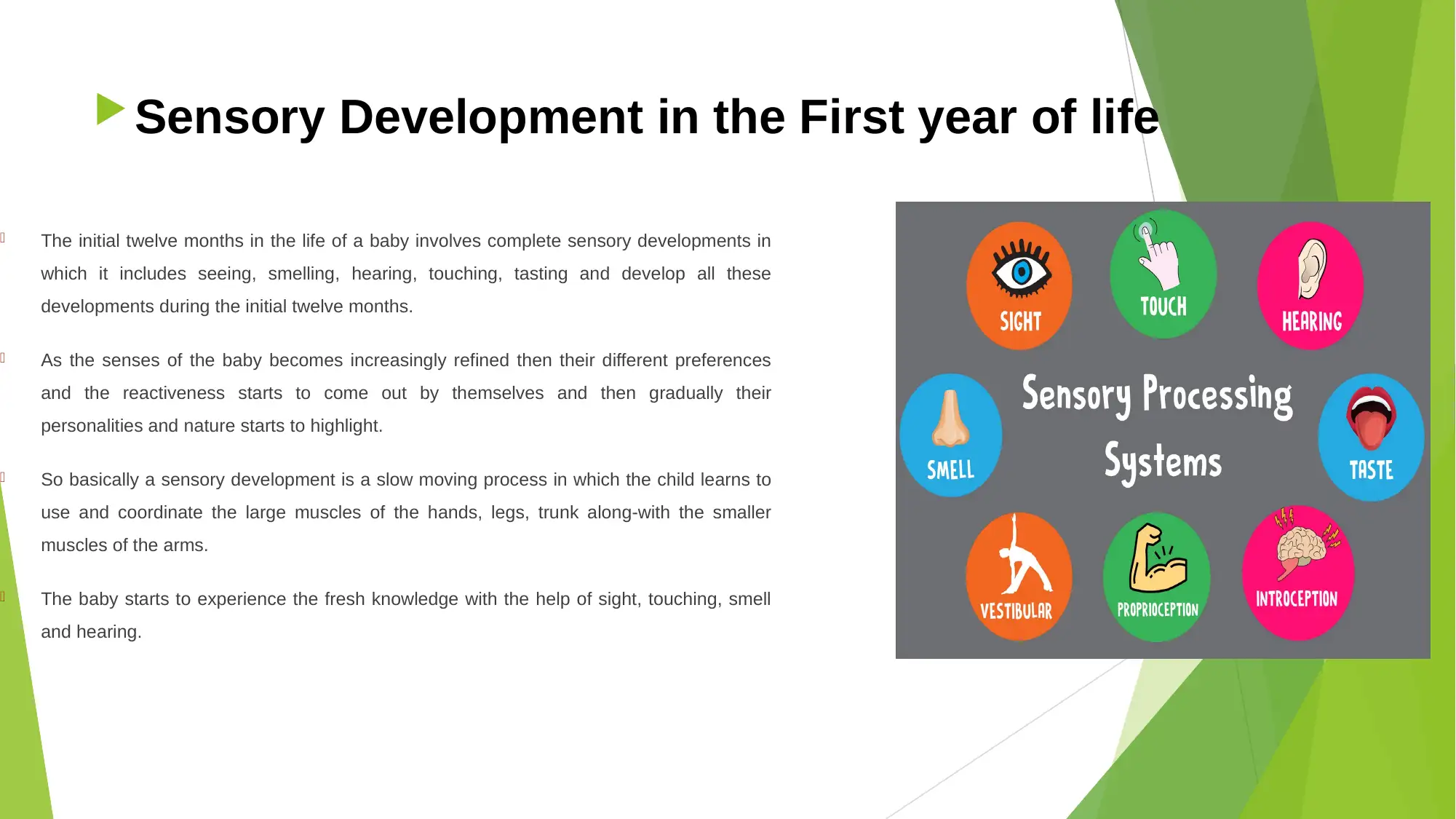
Sensory Development in the First year of life
The initial twelve months in the life of a baby involves complete sensory developments in
which it includes seeing, smelling, hearing, touching, tasting and develop all these
developments during the initial twelve months.
As the senses of the baby becomes increasingly refined then their different preferences
and the reactiveness starts to come out by themselves and then gradually their
personalities and nature starts to highlight.
So basically a sensory development is a slow moving process in which the child learns to
use and coordinate the large muscles of the hands, legs, trunk along-with the smaller
muscles of the arms.
The baby starts to experience the fresh knowledge with the help of sight, touching, smell
and hearing.
The initial twelve months in the life of a baby involves complete sensory developments in
which it includes seeing, smelling, hearing, touching, tasting and develop all these
developments during the initial twelve months.
As the senses of the baby becomes increasingly refined then their different preferences
and the reactiveness starts to come out by themselves and then gradually their
personalities and nature starts to highlight.
So basically a sensory development is a slow moving process in which the child learns to
use and coordinate the large muscles of the hands, legs, trunk along-with the smaller
muscles of the arms.
The baby starts to experience the fresh knowledge with the help of sight, touching, smell
and hearing.

Current scientific research relating to neurological
and brain development in early years.
The science behind the initial level of the development of brain can specify in the form of
the investments in the early level of childhood.
These concepts help to develop on the basis of the neuroscience and the behavioural
research which help to justify the reason that child development from the time of birth till
five years is the basic foundation for the developing and flourishing society.
The current research signifies that brains are built over a period of time starting from the
bottom to the top and then continues till the adulthood. The genes and the experience
also plays a crucial part in and their interactive influences also plays an important part.
Moreover, the capacity of the brain starts on decreasing according to age, the emotional,
cognitive and the social abilities are twisted together throughout the course of life.
and brain development in early years.
The science behind the initial level of the development of brain can specify in the form of
the investments in the early level of childhood.
These concepts help to develop on the basis of the neuroscience and the behavioural
research which help to justify the reason that child development from the time of birth till
five years is the basic foundation for the developing and flourishing society.
The current research signifies that brains are built over a period of time starting from the
bottom to the top and then continues till the adulthood. The genes and the experience
also plays a crucial part in and their interactive influences also plays an important part.
Moreover, the capacity of the brain starts on decreasing according to age, the emotional,
cognitive and the social abilities are twisted together throughout the course of life.
⊘ This is a preview!⊘
Do you want full access?
Subscribe today to unlock all pages.

Trusted by 1+ million students worldwide
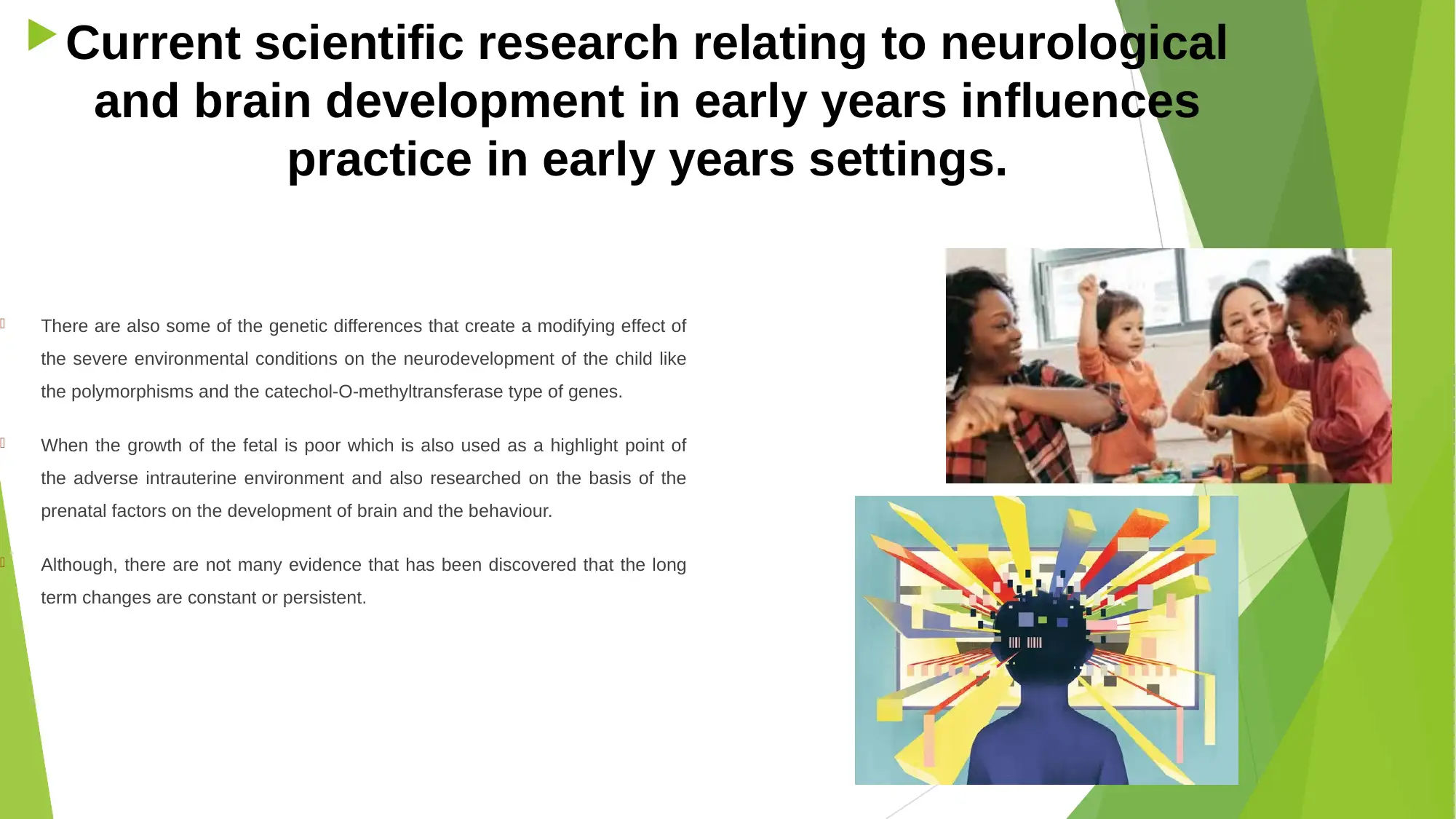
Current scientific research relating to neurological
and brain development in early years influences
practice in early years settings.
There are also some of the genetic differences that create a modifying effect of
the severe environmental conditions on the neurodevelopment of the child like
the polymorphisms and the catechol-O-methyltransferase type of genes.
When the growth of the fetal is poor which is also used as a highlight point of
the adverse intrauterine environment and also researched on the basis of the
prenatal factors on the development of brain and the behaviour.
Although, there are not many evidence that has been discovered that the long
term changes are constant or persistent.
and brain development in early years influences
practice in early years settings.
There are also some of the genetic differences that create a modifying effect of
the severe environmental conditions on the neurodevelopment of the child like
the polymorphisms and the catechol-O-methyltransferase type of genes.
When the growth of the fetal is poor which is also used as a highlight point of
the adverse intrauterine environment and also researched on the basis of the
prenatal factors on the development of brain and the behaviour.
Although, there are not many evidence that has been discovered that the long
term changes are constant or persistent.
Paraphrase This Document
Need a fresh take? Get an instant paraphrase of this document with our AI Paraphraser

Theoretical perspectives in relation to cognitive development and
its impact on current practices.
The theory of Piaget and Gesell specifies that the development on the intellectual basis have an
outcome from an active, different interplay between the child and his or her environment and it
also states the promotion of the changing development in the already arranges sequence.
He has contributed a lot on the knowledge of the growing infant and the child. Another theory of
Eriksson and Spock stated the development related to the emotional level in the children in
terms of time period.
There are basically four stages of this theory that includes the sensorimotor, pre operational,
concrete operational and the formal operational.
Taking in account these stages it helps in the drawing the conclusions about the children's
cognitive development.
There are many implications that the theoretical perspectives have on the existing practices
such as there is an emphasize on the procedure of the thinking of the children and not just on
the products, there is a identification of the important function of the active, self-initiated and the
engagement of the children in the activities related to learning.
its impact on current practices.
The theory of Piaget and Gesell specifies that the development on the intellectual basis have an
outcome from an active, different interplay between the child and his or her environment and it
also states the promotion of the changing development in the already arranges sequence.
He has contributed a lot on the knowledge of the growing infant and the child. Another theory of
Eriksson and Spock stated the development related to the emotional level in the children in
terms of time period.
There are basically four stages of this theory that includes the sensorimotor, pre operational,
concrete operational and the formal operational.
Taking in account these stages it helps in the drawing the conclusions about the children's
cognitive development.
There are many implications that the theoretical perspectives have on the existing practices
such as there is an emphasize on the procedure of the thinking of the children and not just on
the products, there is a identification of the important function of the active, self-initiated and the
engagement of the children in the activities related to learning.
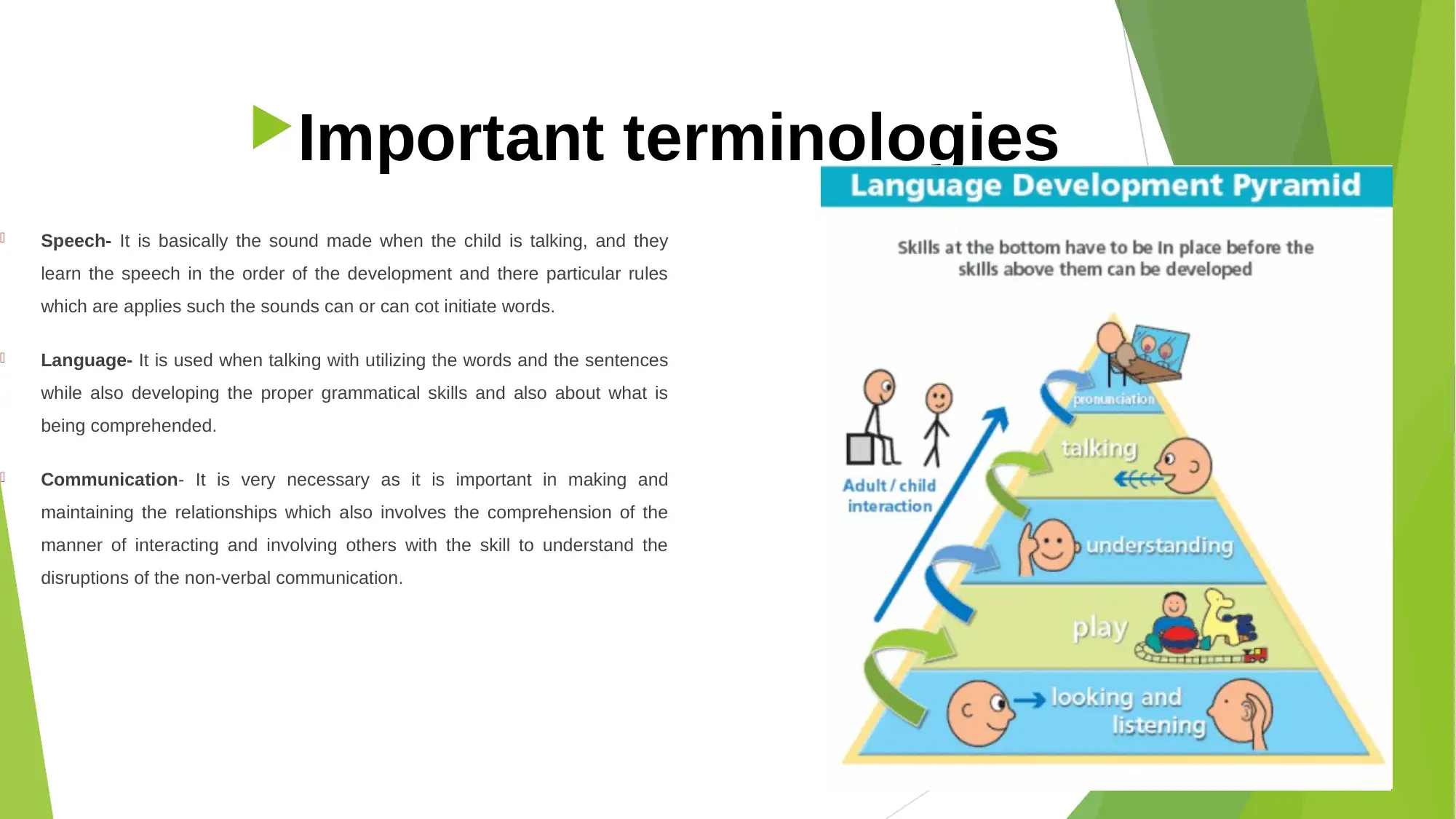
Important terminologies
Speech- It is basically the sound made when the child is talking, and they
learn the speech in the order of the development and there particular rules
which are applies such the sounds can or can cot initiate words.
Language- It is used when talking with utilizing the words and the sentences
while also developing the proper grammatical skills and also about what is
being comprehended.
Communication- It is very necessary as it is important in making and
maintaining the relationships which also involves the comprehension of the
manner of interacting and involving others with the skill to understand the
disruptions of the non-verbal communication.
Speech- It is basically the sound made when the child is talking, and they
learn the speech in the order of the development and there particular rules
which are applies such the sounds can or can cot initiate words.
Language- It is used when talking with utilizing the words and the sentences
while also developing the proper grammatical skills and also about what is
being comprehended.
Communication- It is very necessary as it is important in making and
maintaining the relationships which also involves the comprehension of the
manner of interacting and involving others with the skill to understand the
disruptions of the non-verbal communication.
⊘ This is a preview!⊘
Do you want full access?
Subscribe today to unlock all pages.

Trusted by 1+ million students worldwide
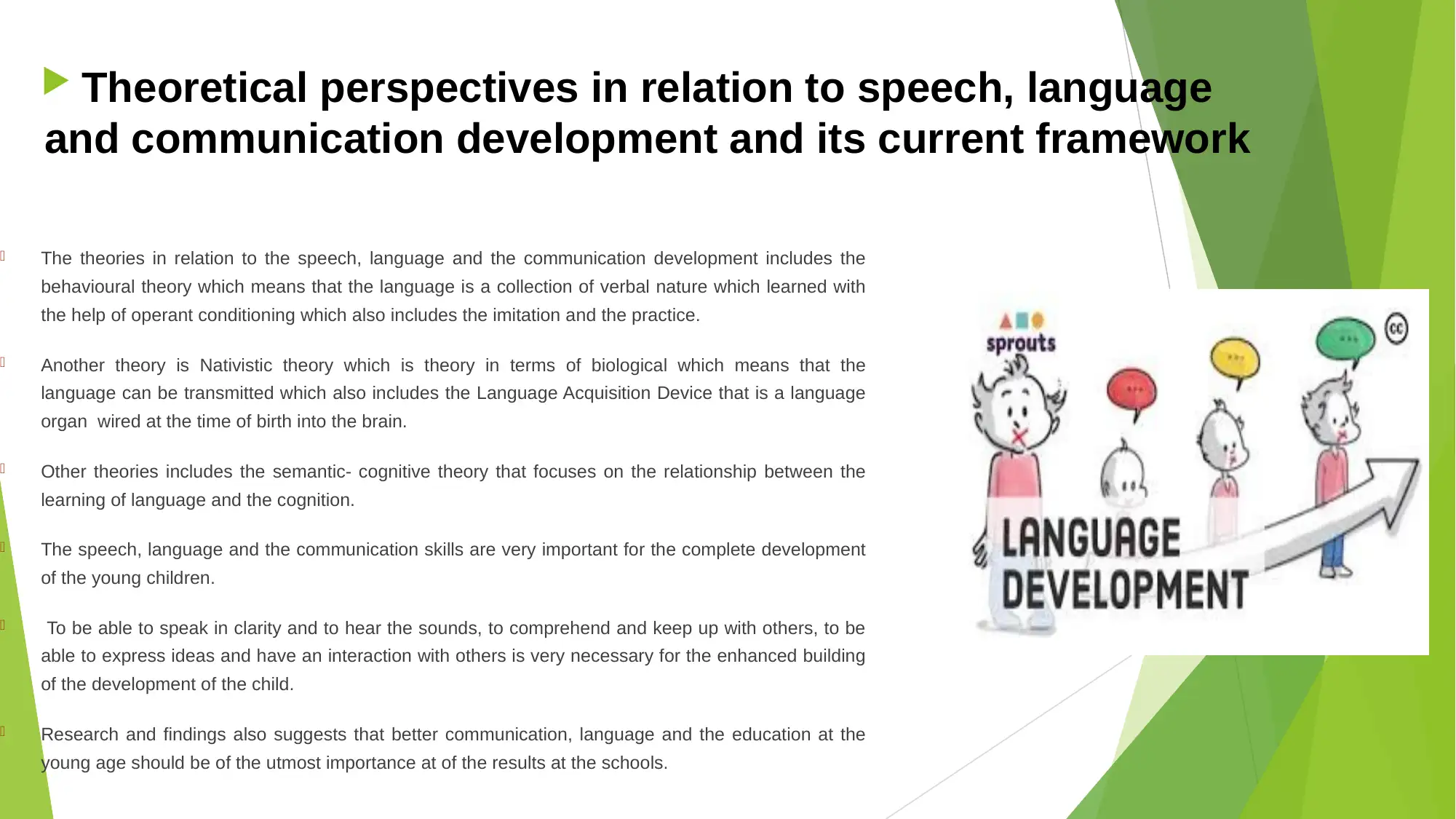
Theoretical perspectives in relation to speech, language
and communication development and its current framework
The theories in relation to the speech, language and the communication development includes the
behavioural theory which means that the language is a collection of verbal nature which learned with
the help of operant conditioning which also includes the imitation and the practice.
Another theory is Nativistic theory which is theory in terms of biological which means that the
language can be transmitted which also includes the Language Acquisition Device that is a language
organ wired at the time of birth into the brain.
Other theories includes the semantic- cognitive theory that focuses on the relationship between the
learning of language and the cognition.
The speech, language and the communication skills are very important for the complete development
of the young children.
To be able to speak in clarity and to hear the sounds, to comprehend and keep up with others, to be
able to express ideas and have an interaction with others is very necessary for the enhanced building
of the development of the child.
Research and findings also suggests that better communication, language and the education at the
young age should be of the utmost importance at of the results at the schools.
and communication development and its current framework
The theories in relation to the speech, language and the communication development includes the
behavioural theory which means that the language is a collection of verbal nature which learned with
the help of operant conditioning which also includes the imitation and the practice.
Another theory is Nativistic theory which is theory in terms of biological which means that the
language can be transmitted which also includes the Language Acquisition Device that is a language
organ wired at the time of birth into the brain.
Other theories includes the semantic- cognitive theory that focuses on the relationship between the
learning of language and the cognition.
The speech, language and the communication skills are very important for the complete development
of the young children.
To be able to speak in clarity and to hear the sounds, to comprehend and keep up with others, to be
able to express ideas and have an interaction with others is very necessary for the enhanced building
of the development of the child.
Research and findings also suggests that better communication, language and the education at the
young age should be of the utmost importance at of the results at the schools.
Paraphrase This Document
Need a fresh take? Get an instant paraphrase of this document with our AI Paraphraser

Theoretical perspectives in relation to speech, language
and communication development and its current framework
The theories in relation to the speech, language and the communication development includes the
behavioural theory which means that the language is a collection of verbal nature which learned with
the help of operant conditioning which also includes the imitation and the practice.
Another theory is Nativistic theory which is theory in terms of biological which means that the
language can be transmitted which also includes the Language Acquisition Device that is a language
organ wired at the time of birth into the brain.
Other theories includes the semantic- cognitive theory that focuses on the relationship between the
learning of language and the cognition.
The speech, language and the communication skills are very important for the complete development
of the young children.
To be able to speak in clarity and to hear the sounds, to comprehend and keep up with others, to be
able to express ideas and have an interaction with others is very necessary for the enhanced building
of the development of the child.
Research and findings also suggests that better communication, language and the education at the
young age should be of the utmost importance at of the results at the schools.
and communication development and its current framework
The theories in relation to the speech, language and the communication development includes the
behavioural theory which means that the language is a collection of verbal nature which learned with
the help of operant conditioning which also includes the imitation and the practice.
Another theory is Nativistic theory which is theory in terms of biological which means that the
language can be transmitted which also includes the Language Acquisition Device that is a language
organ wired at the time of birth into the brain.
Other theories includes the semantic- cognitive theory that focuses on the relationship between the
learning of language and the cognition.
The speech, language and the communication skills are very important for the complete development
of the young children.
To be able to speak in clarity and to hear the sounds, to comprehend and keep up with others, to be
able to express ideas and have an interaction with others is very necessary for the enhanced building
of the development of the child.
Research and findings also suggests that better communication, language and the education at the
young age should be of the utmost importance at of the results at the schools.
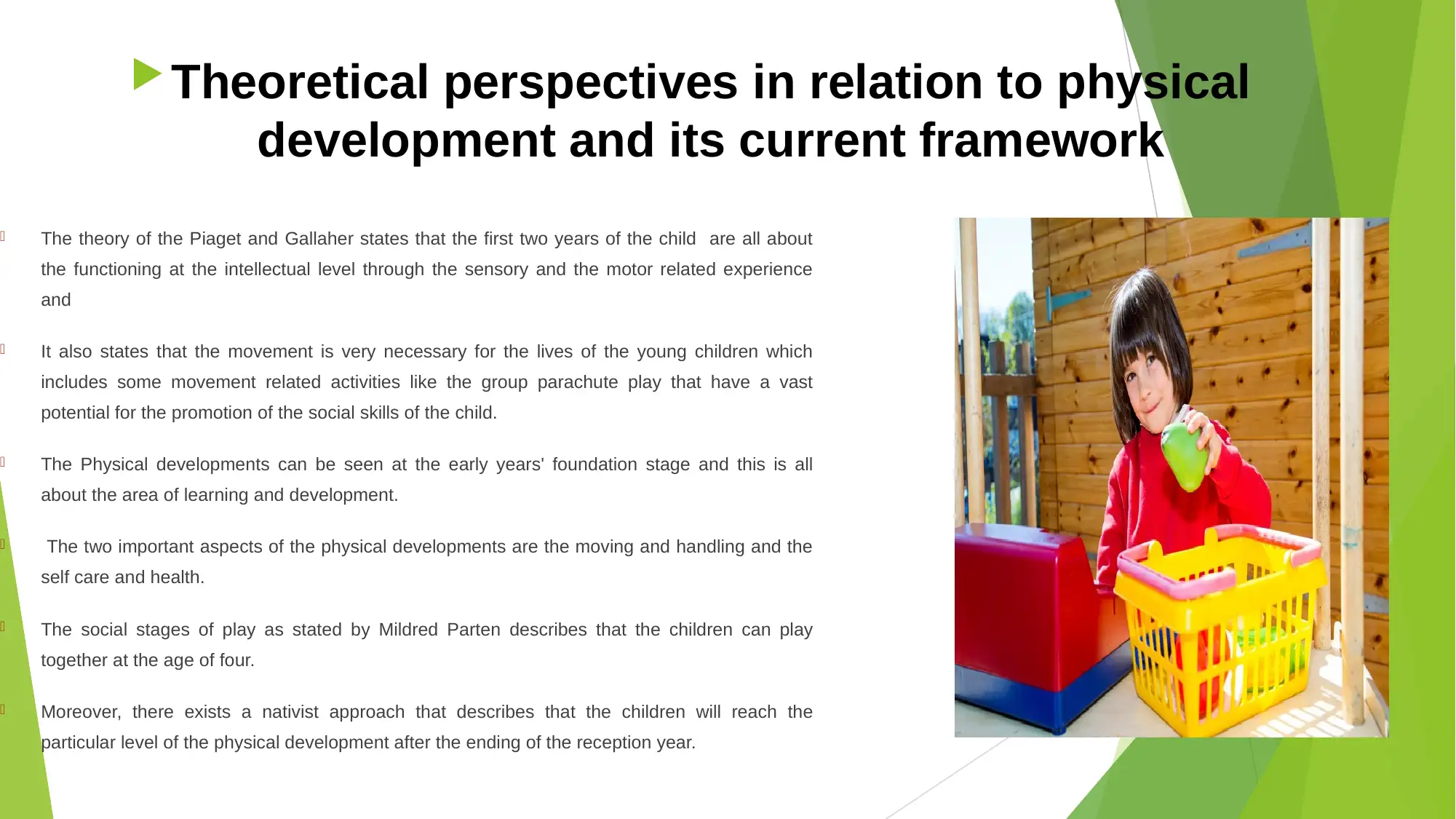
Theoretical perspectives in relation to physical
development and its current framework
The theory of the Piaget and Gallaher states that the first two years of the child are all about
the functioning at the intellectual level through the sensory and the motor related experience
and
It also states that the movement is very necessary for the lives of the young children which
includes some movement related activities like the group parachute play that have a vast
potential for the promotion of the social skills of the child.
The Physical developments can be seen at the early years' foundation stage and this is all
about the area of learning and development.
The two important aspects of the physical developments are the moving and handling and the
self care and health.
The social stages of play as stated by Mildred Parten describes that the children can play
together at the age of four.
Moreover, there exists a nativist approach that describes that the children will reach the
particular level of the physical development after the ending of the reception year.
development and its current framework
The theory of the Piaget and Gallaher states that the first two years of the child are all about
the functioning at the intellectual level through the sensory and the motor related experience
and
It also states that the movement is very necessary for the lives of the young children which
includes some movement related activities like the group parachute play that have a vast
potential for the promotion of the social skills of the child.
The Physical developments can be seen at the early years' foundation stage and this is all
about the area of learning and development.
The two important aspects of the physical developments are the moving and handling and the
self care and health.
The social stages of play as stated by Mildred Parten describes that the children can play
together at the age of four.
Moreover, there exists a nativist approach that describes that the children will reach the
particular level of the physical development after the ending of the reception year.
⊘ This is a preview!⊘
Do you want full access?
Subscribe today to unlock all pages.

Trusted by 1+ million students worldwide

Theoretical perspectives in relation to personal,
social and emotional development and its current
framework
The personal development is totally based on how the children obtain the knowledge and also on the
basis of their individual personal skills, the way in which they think and the manner in which they
perceive themselves.
Social development means the way in which they comprehend themselves in relation to others , the
way in which they make friends, to comprehend the rules of the society and how to behave in front of
others.
Emotional development means acquiring the feelings, comprehending them and the capability to feel
empathy for others and also their feelings.
The current scenario is framed in relation to the personal, social and the emotional development on the
basis of factors such as the self-regulation, self- management and building the relationships.
The theory which encourages the importance of having the key worker which can be trusted is known
as the Bowlby's Attachment theory.
The theory of mind encourages the ability of the child to develop and maintain the relationships and
recognize and spread empathy, compassion and a comprehension of others.
social and emotional development and its current
framework
The personal development is totally based on how the children obtain the knowledge and also on the
basis of their individual personal skills, the way in which they think and the manner in which they
perceive themselves.
Social development means the way in which they comprehend themselves in relation to others , the
way in which they make friends, to comprehend the rules of the society and how to behave in front of
others.
Emotional development means acquiring the feelings, comprehending them and the capability to feel
empathy for others and also their feelings.
The current scenario is framed in relation to the personal, social and the emotional development on the
basis of factors such as the self-regulation, self- management and building the relationships.
The theory which encourages the importance of having the key worker which can be trusted is known
as the Bowlby's Attachment theory.
The theory of mind encourages the ability of the child to develop and maintain the relationships and
recognize and spread empathy, compassion and a comprehension of others.
1 out of 10
Related Documents
Your All-in-One AI-Powered Toolkit for Academic Success.
+13062052269
info@desklib.com
Available 24*7 on WhatsApp / Email
![[object Object]](/_next/static/media/star-bottom.7253800d.svg)
Unlock your academic potential
Copyright © 2020–2025 A2Z Services. All Rights Reserved. Developed and managed by ZUCOL.




